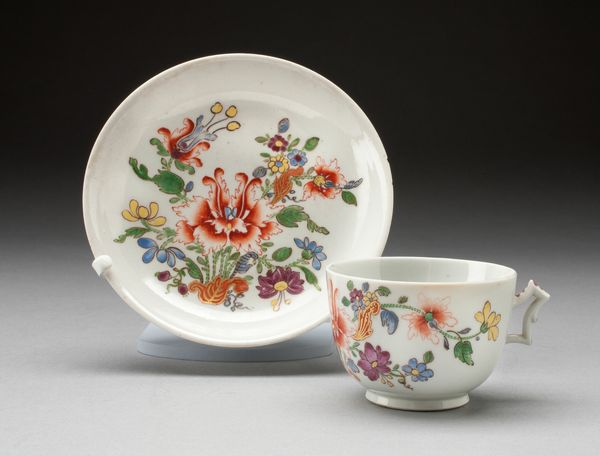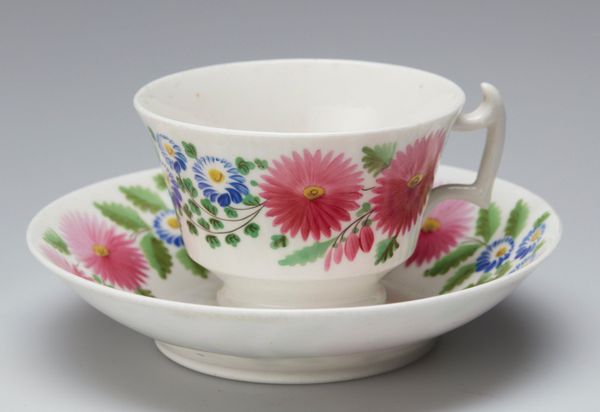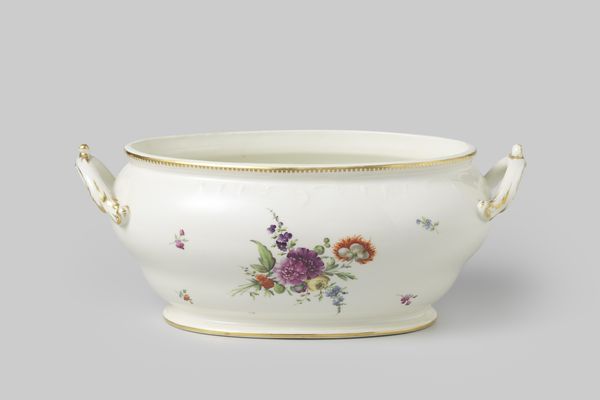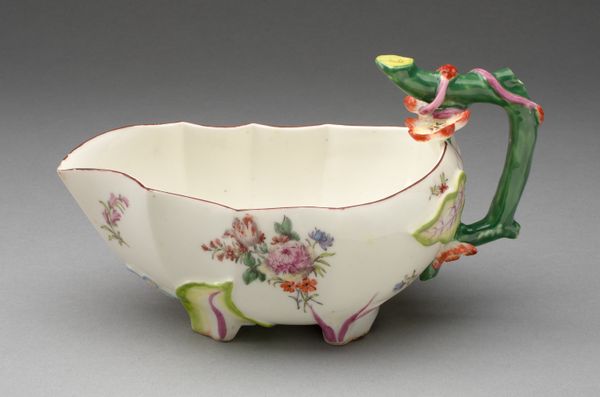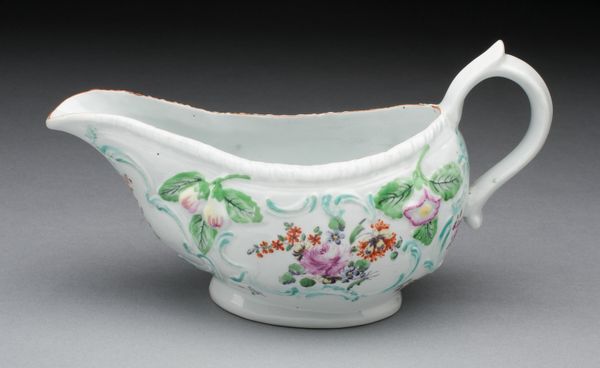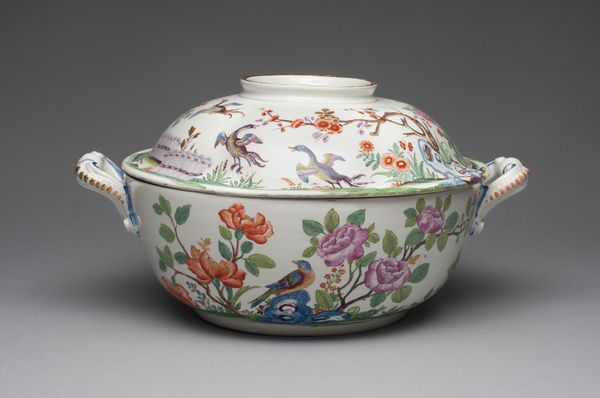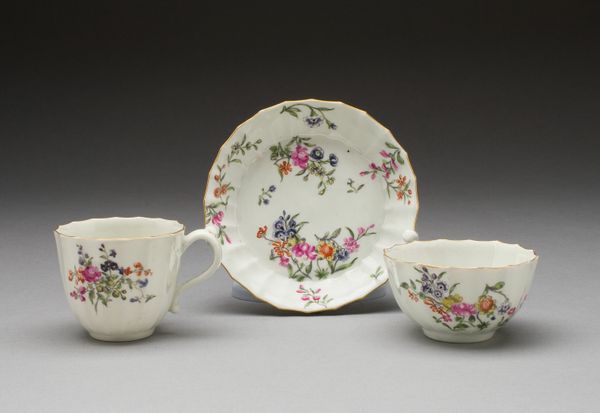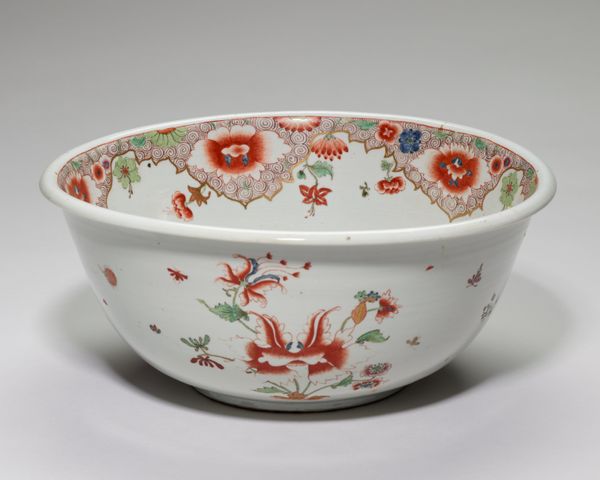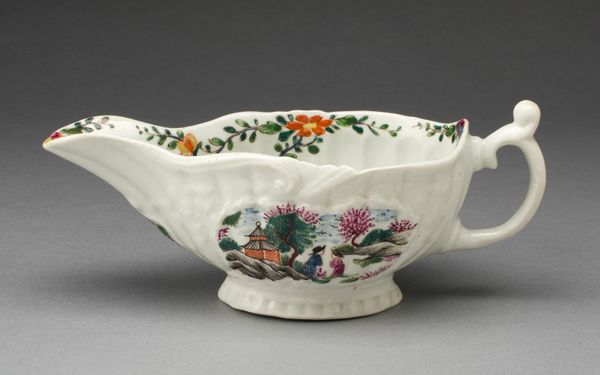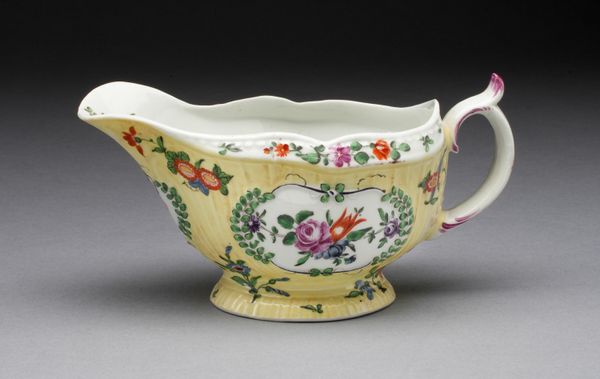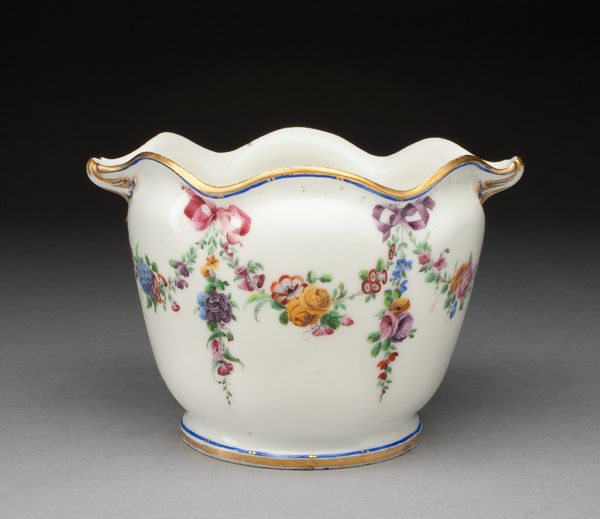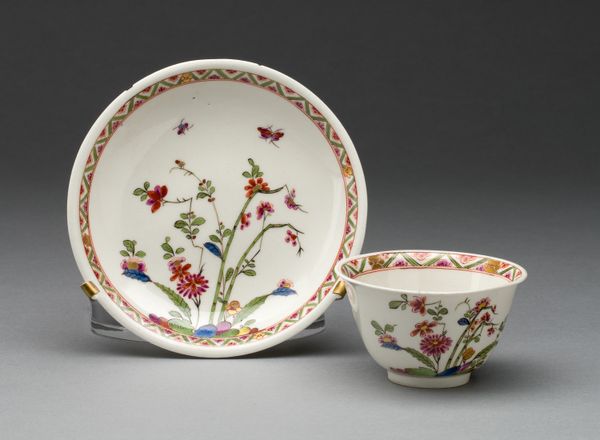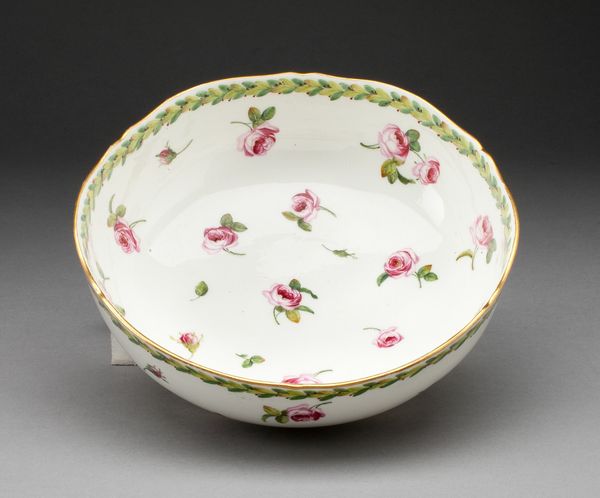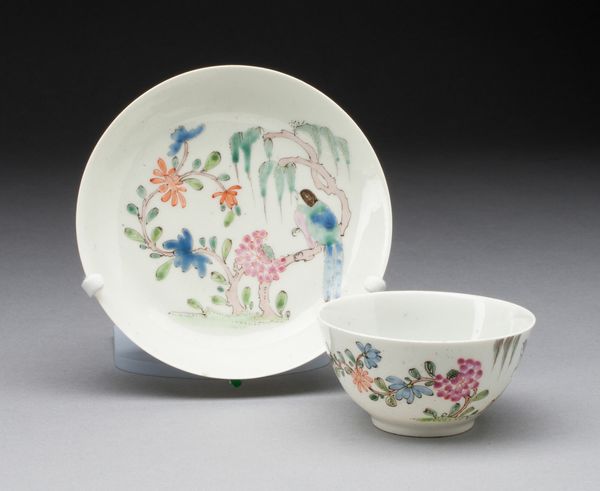
ceramic, earthenware
#
ceramic
#
earthenware
#
stoneware
#
rococo
Dimensions: 3 1/2 x 5 x 5 in. (8.9 x 12.7 x 12.7 cm)
Copyright: Public Domain
Editor: This is a “Spitoon,” made of earthenware, crafted around 1749 to 1760 by Paul Antoine Hannong. The floral design gives this everyday object such an interesting feel. How should we consider this objet d’art? Curator: This is a really compelling piece when you think about its historical and social context. While seemingly delicate with its Rococo style, floral motifs, and pastel colors, the object's purpose, as a spitoon, speaks to a broader, often glossed-over narrative of public health and social behaviors in the 18th century. Consider how this contrasts with modern sensitivities around bodily functions. Does the floral design prettify a very human, perhaps even crude, activity? Or is it normalizing and elevating this behavior within the upper class, creating new class boundaries based on aesthetics and performance? Editor: That’s interesting. So, instead of simply seeing a pretty object, we can interpret it as reflecting a wider power dynamic within its society? Curator: Exactly. And this brings in interesting questions about taste, hygiene, class, and gender, for example. Think about who likely used this item. Were they primarily men who chewed tobacco? And how would that behavior impact the lived experiences of the working classes? Editor: I hadn’t thought about how the flowers played into social class. It really puts the object in a new light. Curator: Right! It is more than just a functional object. It prompts important social and cultural questions around our daily activities, power structures and societal perceptions. The Rococo design could be interpreted as a method to almost distract from the "rude" aspect. Editor: I’ll definitely think about that when I see Rococo floral design from now on. Thanks for the context!
Comments
No comments
Be the first to comment and join the conversation on the ultimate creative platform.
